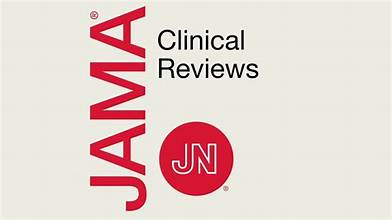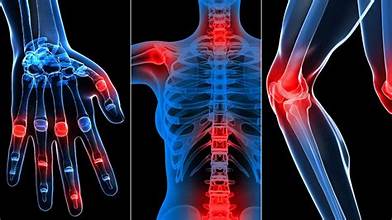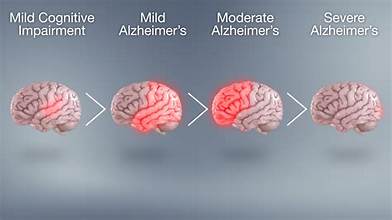What is Chlamydia?
Chlamydia is one of the most common sexually transmitted infections (STIs), caused by the bacterium Chlamydia trachomatis. It can affect both men and women and is usually spread through vaginal, anal, or oral sex. While the infection is treatable and completely curable with antibiotics, it often goes unnoticed because many people do not develop obvious symptoms.
When symptoms do appear, they may include unusual discharge, pain during urination, or pelvic discomfort, but these signs are frequently mild and easy to overlook. Because of this, regular testing is important, especially for sexually active individuals under the age of 25 or those with new or multiple partners.
Getting treatment promptly is crucial. If left untreated, chlamydia can cause serious health problems such as pelvic inflammatory disease (PID) in women, infertility, and an increased risk of ectopic pregnancy. In men, it can lead to infections of the urethra and testicles, sometimes affecting fertility as well.
The good news is that with early diagnosis and proper medication, chlamydia can be fully cured, and complications can be avoided. Using condoms consistently and getting routine STI screenings are effective ways to prevent infection and protect reproductive health.
Chlamydia Symptoms and Health Risks:
Chlamydia is often called a “silent” infection because many people never develop noticeable symptoms. However, it can still cause serious complications, even without clear warning signs. If symptoms do appear, they may take several weeks after exposure to become noticeable.
Symptoms in Women:
Even without symptoms, chlamydia can harm the female reproductive system. When signs are present, they may include:
- Unusual vaginal discharge
- Burning or pain while urinating
Symptoms in Men:
Men who develop symptoms may experience:
- Discharge from the penis
- Pain or burning while urinating
- Swelling or discomfort in one or both testicles (less common)
Rectal Infections:
Chlamydia can also infect the rectum in both men and women, either through receptive anal sex or by spreading from another infected area (such as the vagina). These infections are often symptomless but can sometimes cause:
- Rectal pain
- Discharge
- Bleeding
When to Seek Medical Care:
It’s important to see a healthcare professional if you develop any of these symptoms, or if your partner has been diagnosed with an STI or is showing signs such as unusual sores, abnormal discharge, painful urination, or unexpected bleeding between periods.
How Chlamydia Spreads?
Causes of Chlamydia:
Chlamydia is passed from one person to another through sexual contact when vaginal fluids or semen carrying the bacteria Chlamydia trachomatis are exchanged. Transmission can happen even without penetration or ejaculation. The infection can spread in several ways, including:
- Vaginal sex: bacteria can move from the penis to the vagina, or vice versa.
- Anal sex: bacteria can pass from the penis to the anus, or vice versa.
- Oral sex: bacteria can be transferred between the mouth and the penis, vagina, or anus.
- Sex toys: sharing toys without proper cleaning or protection can transfer bacteria.
- Manual contact: though less common, chlamydia can spread if infected fluids touch the eyes, leading to conjunctivitis (pink eye). For example, this may occur if someone touches infected genitals and then rubs their eyes without washing their hands.
What Does Not Spread Chlamydia?
Chlamydia cannot be transmitted through everyday non-sexual contact. You cannot get it from:
- Kissing
- Sharing food, drinks, or utensils
- Hugging or holding hands
- Sitting on a toilet seat
- Breathing in coughs or sneezes from someone who has the infection
Testing and Diagnosis of Chlamydia:
Should you get tested?
If you are sexually active, it’s important to have open and honest discussions with your healthcare provider about your sexual health. They can guide you on whether you need to be tested for chlamydia and other sexually transmitted infections (STIs).
Who should get tested for chlamydia?
- Sexually active women under 25: Routine annual screening is recommended because this age group has a higher risk of infection.
- Women 25 and older: Testing is advised if you have risk factors, such as new or multiple sexual partners, or if your partner has an STI.
- Men who have sex with men (gay or bisexual men):Annual testing is recommended, sometimes more frequently (every 3–6 months) if you have multiple partners or engage in high-risk sexual behaviors.
- Pregnant women: Screening is often recommended early in pregnancy and, in some cases, again later in pregnancy to prevent complications for both mother and baby.
How testing is done?
Chlamydia tests are simple and painless. They may include:
- Urine tests: a urine sample is collected to check for the bacteria.
- Swab tests: a swab may be taken from the cervix (for women), urethra (for men), throat, or rectum depending on the type of sexual activity.
Why testing matter?
Since chlamydia often causes no symptoms, regular testing is the only reliable way to know if you’re infected. Early detection allows for quick treatment with antibiotics, which can prevent serious complications such as infertility, pelvic inflammatory disease (PID), or pregnancy complications.
Chlamydia Treatment:
Chlamydia is a bacterial infection, which means it can be completely cured with the right antibiotics. Healthcare providers usually prescribe oral medications such as doxycycline or azithromycin to eliminate the infection.
Most people begin to recover within one to two weeks after starting treatment. It’s very important to take the full course of antibiotics as directed, even if symptoms improve quickly, to ensure the infection is fully cleared and to prevent complications or reinfection.
How to Lower Your Risk of Chlamydia?
While there’s no guaranteed way to prevent chlamydia other than not having sex, you can significantly reduce your risk by following safe practices:
- Use protection every time: Always use condoms or dental dams during vaginal, anal, and oral sex. If you or your partner have a latex allergy, polyurethane condoms are a safe alternative.
- Be in a committed relationship: Having sex only with one partner who has tested negative for chlamydia and other STIs greatly lowers the risk.
- Limit sexual partners: Reducing the number of partners helps decrease your chances of exposure.
- Communicate openly: Talk honestly with your partner(s) about STI testing, status, and protection before engaging in sexual activity.
- Get tested regularly: Routine screening for chlamydia and other STIs is key, especially if you’re under 25, have multiple partners, or are at higher risk.
- Be careful with sex toys: Don’t share them, or if you do, clean them thoroughly and use a new condom on them for each partner.
- Avoid douching: This can upset the natural balance of bacteria in the vagina and increase infection risk.
- Stay aware of alcohol and drug use: Intoxication can lead to unsafe decisions and risky sexual behavior, raising the chances of contracting an STI.
In cases of more severe infection particularly in people with a vagina hospital care may sometimes be required. This can involve receiving antibiotics through an IV (intravenous line) along with pain relief medication.
Conclusion:
Chlamydia remains one of the most widespread sexually transmitted infections in the United States, but the good news is that it is both preventable and fully curable. Because it often develops without obvious symptoms, many people may not realize they are infected, making regular testing and open conversations about sexual health essential.
With early detection, chlamydia can be treated easily with antibiotics, helping to prevent serious long-term complications such as infertility, pelvic inflammatory disease, and pregnancy-related risks. Practicing safer sex such as using condoms or dental dams, limiting sexual partners, and maintaining honest communication with partners plays a key role in lowering the risk of infection.







